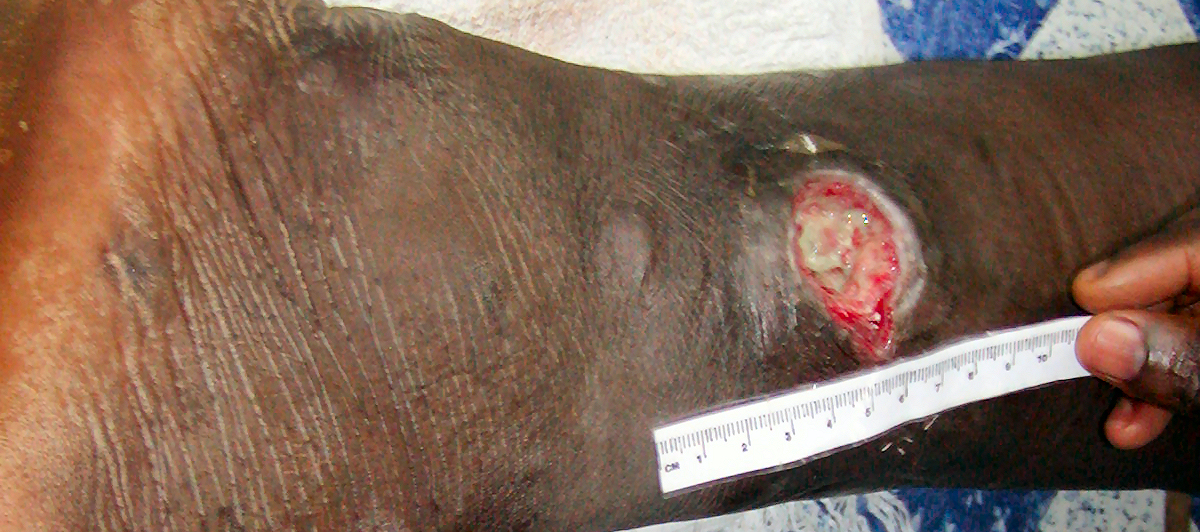Linda Benskin, RN, BSN, Ghana_SRN, Church of Christ Mission Clinic, volunteer nurse, 11304 Prairie Dog Trail, Austin, TX 78750-1322 and Peter Bombande, Ghana_SRN, Church of Christ Mission Clinic, Clinic Director, PO Box 137, Yendi, N.R., Ghana.
Young adult male from isolated village in Ghana suffered for years from lower leg ulcers, deepest: 2.0cm x 2.0cm x 1.5 cm deep. Self-treated with herbal poultices, ciprofloxacin and ibuprofen without improvement. Primary wound had copious yellow drainage with yellow slough and eschar, but not foul-smelling. Co-morbidities vague: significant BLE swelling indicative of venous stasis, but denied swelling prior to wounds; strong pedal pulses, no elephantiasis, adequate protein intake. Acromegaly was considered. Initial BP 150/90, but later 130/80 consistently. Patient needed wound care regularly, so he stayed with a local family. Not able to farm away from home, so dressings needed to promote quick healing. Diminishing swelling was a priority. In 110ºF daily setting, standard foams and hydrocolloids led to dramatic fungal and bacterial infections and compression was untenable, so unique dressing was needed. Treatment included teaching, prayer, oral antibiotics and direct wound care. Polymeric membrane dressings inhibit infection while keeping wounds appropriately moist, and wounds treated with them quickly formed granulation tissue in this setting. Therefore, when woundbed was clean from one week of treatment with sodium-chloride impregnated gauze and triple-antibiotic ointment, polymeric membrane dressings were initiated. Polymeric membrane dressings changed 4x/wk for a month, then 3x/wk. Polymeric membrane wound filler used under standard polymeric membrane dressings as needed. Elastic bandaging quickly abandoned due to discomfort. At first patient would not elevate feet for fear of insulting hosts, but women were educated to encourage him. Swelling reduced dramatically when feet were elevated, but compliance remained problematic. Granulation tissue formed quickly. Woundbed moisture remained appropriate without infection or maceration. Deepest wound healed in 47 days; remaining ulcers closed 5 weeks later. Polymeric membrane standard dressings and wound filler provided effective wound management for multiple ulcers on edematous lower legs despite inability to use compression therapy.

See more of Case Study Poster Abstracts
See more of Case Study Abstracts
See more of The 38th Annual WOCN Society Conference (June 24 -- 28, 2006)

